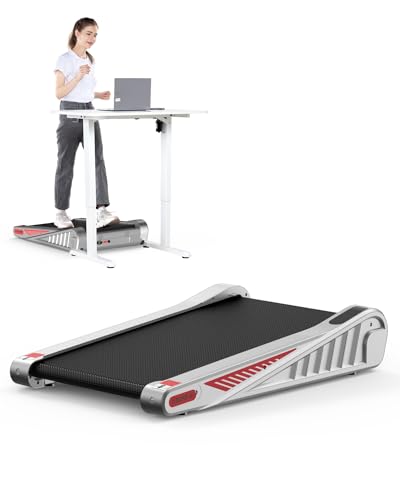Buzzwords De-Buzzed: 10 Other Ways To Say Treadmill For Walking

The Benefits of Using a Treadmill for Walking: Your Ultimate Guide
In a period where sedentary lifestyles have actually become more typical, discovering methods to include exercise can significantly benefit overall health. Walking, considered among the most accessible types of exercise, offers a myriad of health advantages. Integrating this with a treadmill can make it even easier for people to preserve a routine walking regimen, regardless of the weather condition outside. This article will explore the advantages of using a treadmill for walking, compare numerous types, and respond to some frequently asked concerns-- all intended to help readers make notified decisions.
The Advantages of Walking on a Treadmill
1. Convenience and Accessibility
One of the most significant advantages of a treadmill is the convenience it offers. With one in your house, there is no requirement to venture out in harsh weather condition or find a safe walking path.
2. Controlled Environment
Treadmills offer a controlled walking environment that enables users to set their pace, incline, and duration. This makes sure a customized exercise that satisfies specific physical fitness objectives and needs.
3. Low-Impact Exercise
Compared to running or jogging, walking is a low-impact exercise that is simpler on the joints. Treadmills frequently have actually cushioned belts to even more minimize impact stress.
4. Health Benefits
Walking has numerous health advantages, consisting of improved cardiovascular health, boosted state of mind, better weight management, and increased longevity. Incorporating routine walking on a treadmill can magnify these advantages.
5. Multi-tasking Opportunities
While walking on a treadmill, it's possible to participate in other activities such as reading, seeing television, or listening to music. This makes exercises more satisfying and can encourage consistency.
6. Risk Removal
Using a treadmill removes risks related to outdoor walking, such as uneven surface, traffic, and other ecological risks.
Types of Treadmills: A Comparison Table
Choosing the best treadmill can significantly impact the walking experience. Below is a contrast table of various types:
| Treadmill Type | Description | Pros | Cons |
|---|---|---|---|
| Manual Treadmills | Needs physical effort to move the belt. | Generally less expensive; no electricity required. | No automated incline or speed changes. |
| Electric Treadmills | Powered by electricity; adjustable speeds and inclines. | Versatile; easy to utilize; frequently consists of extra functions. | Can be more costly; requires an outlet. |
| Folding Treadmills | Created for simple storage and saving space. | Space-efficient; convenient for home use. | May have a smaller running surface. |
| Industrial Treadmills | Heavier, developed for regular use in health clubs. | Resilient; frequently loaded with features and programs. | Can be extremely pricey. |
How to Get Started with Walking on a Treadmill
If you're brand-new to walking on a treadmill, consider the following steps to develop a safe and reliable routine:
Step 1: Set Your Goals
Identify your walking objectives, whether they are weight-loss, improved endurance, or just an increased daily activity level.
Step 2: Learn the Controls
Acquaint yourself with the treadmill's control panel. Understand how to adjust speed, incline, and how to use any additional features it might have (heart rate display, exercise programs, etc).
Step 3: Warm-Up
Start each walking session with a 5-minute warm-up at a slower pace to prevent injury.
Step 4: Start Slow
Start with low-intensity walking sessions 2 to 3 times a week, gradually increasing your period and intensity.
Step 5: Incorporate Incline
As your physical fitness enhances, consider incorporating an incline into your regular to increase intensity and work various muscle groups.
Action 6: Cool Down
Conclude your exercise with a 5-minute cool-down at a slower pace to assist your body recover.
Often Asked Questions (FAQs)
1. For how long should I stroll on a treadmill for health benefits?
The CDC recommends at least 150 minutes of moderate aerobic activity, like vigorous walking, each week. This translates to about 30 minutes a day, five times a week.
2. Is walking on a treadmill much better than walking outside?
Both deal benefits, but a treadmill permits a controlled environment, which may suit some people better, particularly in differing climate condition.
3. Can I slim down by walking on a treadmill?
Yes, walking can contribute to weight-loss when combined with a healthy diet. It's important to preserve consistency and slowly increase intensity.
4. What speed should I stroll on a treadmill?
For novices, a speed of 3-4 miles per hour is considered a brisk walk. As endurance improves, individuals can change their speed according to their fitness objectives.
5. How can I remain inspired while walking on a treadmill?
Listening to music, seeing television programs, or perhaps signing up with virtual walking communities can assist keep inspiration levels high.
Including a treadmill into a walking regimen can supply immense advantages, making workout accessible and effective. With various kinds of treadmills readily available, individuals can select one that best fits their requirements and preferences. By setting reasonable goals and planning out regular exercises, users can experience the myriad health advantages that come with walking. Keep in simply click the up coming internet page to listen to your body, consider a mix of inclines and speeds, and most notably, take pleasure in the procedure. Walking on a treadmill is not just exercise; it's a step towards a healthier way of life.

